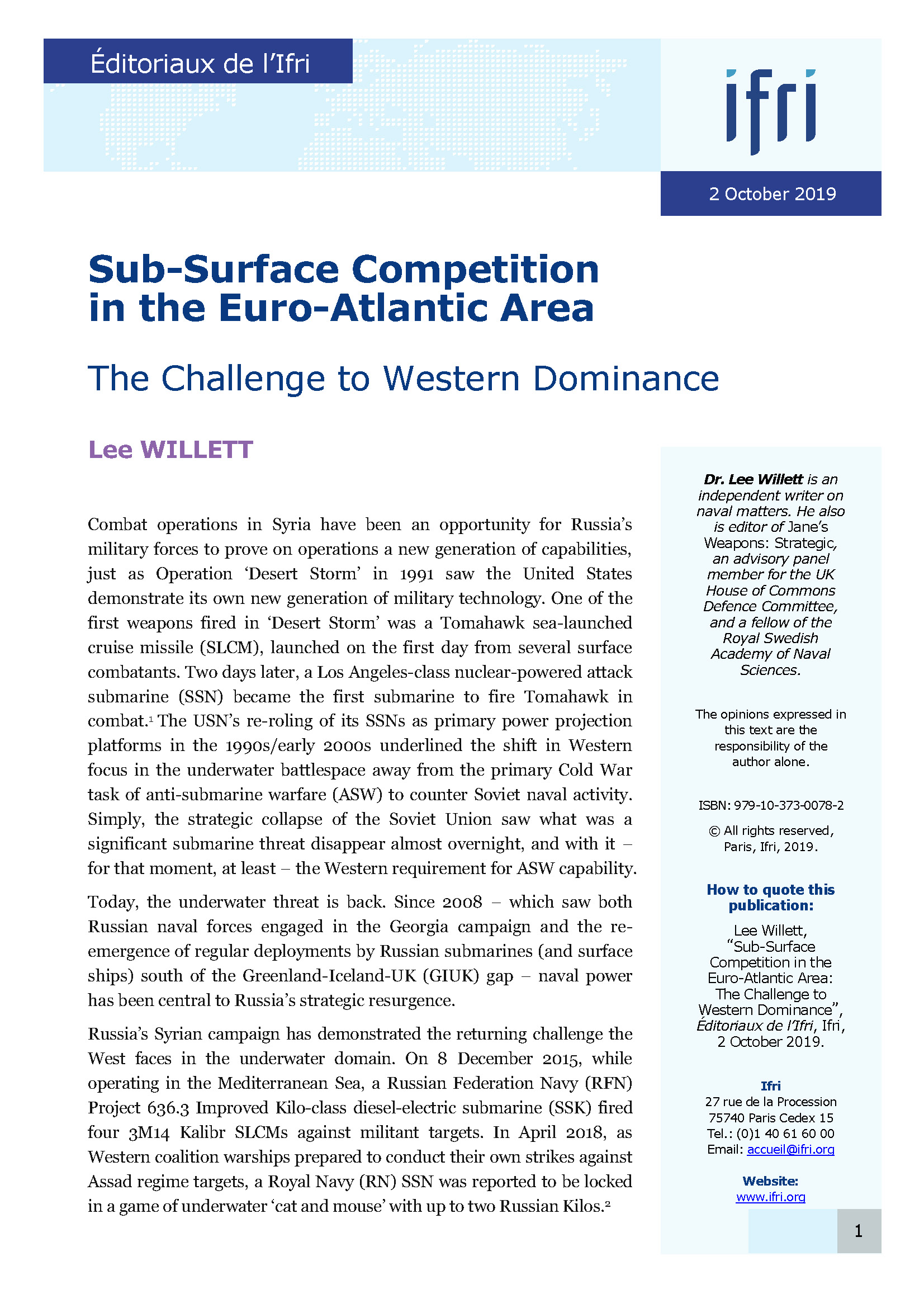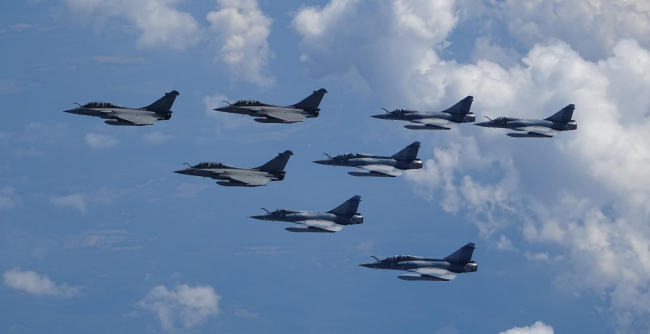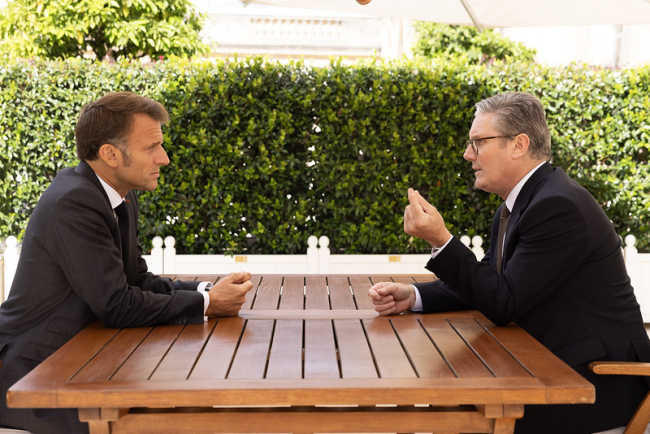Sub-Surface Competition in the Euro-Atlantic Area: The Challenge to Western Dominance

Russia’s Syrian campaign has demonstrated the returning challenge the West faces in the underwater domain.
Combat operations in Syria have been an opportunity for Russia’s military forces to prove on operations a new generation of capabilities, just as Operation ‘Desert Storm’ in 1991 saw the United States demonstrate its own new generation of military technology. One of the first weapons fired in ‘Desert Storm’ was a Tomahawk sea-launched cruise missile (SLCM), launched on the first day from several surface combatants. Two days later, a Los Angeles-class nuclear-powered attack submarine (SSN) became the first submarine to fire Tomahawk in combat.[1] The USN’s re-roling of its SSNs as primary power projection platforms in the 1990s/early 2000s underlined the shift in Western focus in the underwater battlespace away from the primary Cold War task of anti-submarine warfare (ASW) to counter Soviet naval activity. Simply, the strategic collapse of the Soviet Union saw what was a significant submarine threat disappear almost overnight, and with it – for that moment, at least – the Western requirement for ASW capability.
Today, the underwater threat is back. Since 2008 – which saw both Russian naval forces engaged in the Georgia campaign and the re-emergence of regular deployments by Russian submarines (and surface ships) south of the Greenland-Iceland-UK (GIUK) gap – naval power has been central to Russia’s strategic resurgence.
Russia’s Syrian campaign has demonstrated the returning challenge the West faces in the underwater domain. On 8 December 2015, while operating in the Mediterranean Sea, a Russian Federation Navy (RFN) Project 636.3 Improved Kilo-class diesel-electric submarine (SSK) fired four 3M14 Kalibr SLCMs against militant targets. In April 2018, as Western coalition warships prepared to conduct their own strikes against Assad regime targets, a Royal Navy (RN) SSN was reported to be locked in a game of underwater ‘cat and mouse’ with up to two Russian Kilos.[2]
NATO and Russian forces have both played the roles of ‘cat’ and ‘mouse’ in this ‘game’. In late 2016 when the Russian aircraft carrier Admiral Kuznetsov made a much-publicised transit from Northern waters to the Mediterranean Sea, the Russian defence ministry claimed the carrier’s escort force had detected several NATO submarines – including a Virginia-class SSN and a Dutch Walrus-class SSK – operating within the carrier’s vicinity.[3] Media reports also suggested that the Kuznetsov group itself was accompanied by three submarines – a Kilo-class boat and two Akula-class SSNs.[4]
Sub-surface operations in and around Syria have thus provided a snapshot of the competition that has returned in the Euro-Atlantic underwater domain. Western naval forces have always focused on maintaining quantative and qualitative advantage in underwater capability, but this pre-eminence is being challenged by a Russian submarine force bringing improved capabilities and improved levels of operational presence and output.
Russia’s Underwater Return
Russian underwater presence is still restricted by a relative lack of submarine numbers, particularly in terms of new boats. According to an assessment of Jane’s Fighting Ships data, at the time of writing 33 Russian operational boats are currently assigned to fleets based in the Euro-Atlantic theatre (Northern, Baltic, and Black Sea fleets). Of these boats, less than 10 have been commissioned within the last decade. Jane’s Fighting Ships suggests that 13 more boats are planned for delivery by 2023 (seven SSKs, and six SSNs); however, it is not known to which fleets such boats will be assigned. Yet across the submarine classes from which the current 33 boats are drawn, Russia has made considerable progress with sound quietening, for example in its Kilo-class SSKs and in its Akula II/Schuka B Project 971M and Severodvinsk/Yasen Project 885 SSNs.
Perhaps more notably, Russia is also fitting Kalibr SLCMs – both land-attack and anti-ship variants – across its submarine force. While the dual-capable Kalibr has been in development for some time, its wide deployment across the RFN and especially onboard submarines generates a 360-degree threat in the European theatre to both ships and land targets. The RFN has now joined the USN and RN (with Tomahawk) and the French Navy (with Missile de Croisière Naval) in a select group of navies possessing long-range, stand-off SLCM capability. Kalibr’s arrival has been central to delivering a significant step up in Russian sub-surface capability, and Russia intends to increase the missile’s deployment across its fleets.
The challenges for any navy in producing large numbers of submarines quickly may mean that Russia’s sub-surface Kalibr fleet may grow relatively slowly. However, surface ships like Buyan-M corvettes can launch Kalibrs and are a current procurement focus for Russia, due to relatively less complex and less expensive acquisition processes when compared to buying cruisers or destroyers.
According to a recent report, as of early 2019, 19 surface ships and submarines across the RFN carried Kalibr, with 164 missiles deployed in total, all of them in the Euro-Atlantic theatre (Baltic, Black, Caspian, and Northern fleets). However, a single USN Arleigh Burke-class destroyer can carry up to 96 Tomahawks[5], and a single Ohio-class guided-missile submarine (SSGN) – two of which (out of the navy’s four) are assigned to the Atlantic region – can also carry up to 154 Tomahawks.
Increasing the operational presence and output of a covert platform like a submarine and adding to it the ability to strike at targets at sea and ashore provides Russia a step up in operational, political, and strategic impact in a cost-effective manner, explaining why it is prioritising submarine developments.
Unmanned Future
Alongside Kalibr, another underwater capability area Russia is exploiting is unmanned underwater vehicles (UUVs). Two dimensions are worth discussing.
First, Russia appears to be developing a long-range, nuclear-powered, system called Poseidon, which has been referred to as a UUV or a torpedo. In 2018, Putin described it as an “unmanned submersible … that can move at great depths ... intercontinentally, at a speed multiple times higher than the speed of submarines”. He added that the dual-capable UUV is quiet, highly manoeuvrable, and able to engage targets both at sea (including carrier strike groups) and ashore (including coastal infrastructure). Putin said the nuclear-capable variant would deliver “a new type of strategic weapon”.[6]
According to HI Sutton, Russia’s Project 09852 submarine Belgorod will be the first vessel to carry Poseidon.[7] The boat – originally an Oscar II-class SSGN, subsequently adapted as a research ‘mothership’ for new technologies like UUVs – is expected to be launched in 2019, while Poseidon itself is claimed to be “successfully undergoing tests”.[8]
Submarine-based UUVs also present a challenge for the West in undersea communications cables security. While the nature and use of unmanned technologies for such operations is not discussed publicly in detail, Western naval leaders have recently commented more openly on the risks. For example, in 2018 then RN First Sea Lord Admiral Philip Jones said the Russian ocean reconnaissance ship Yantar “often operates on [the UK’s] continental seabed, and it often switches off AIS [automatic identification system] when it suits – and we know it has the capacity to ‘get at’ those cables”. Moreover, he added, Russian submarines “are often reported through open source to be ‘lurking’ in the vicinity of the underwater cables with an assessed capability to also compromise them”.[9]
Sutton, writing back in 2016, argued that AIS enables open-source analysts to monitor the presence of surface platforms like Yantar in relation to cables, but added that “In contrast, genuinely covert operations would be likely to be reserved for the Russian navy’s nuclear-powered special mission submarines such as the Project 10831 ‘Losharik’.”[10] In July 2019, Losharik suffered a fire at sea, and was towed to Northern Fleet’s Severomorsk headquarters.[11]
Submarines and strategic access
In the Cold War, the then-Soviet Union used bastion concepts in Northern waters to secure operating areas for ballistic missile submarines, and also to provide a base from which to project power into the North Atlantic. Today, such concepts are manifested in Russia’s anti-access/area denial (A2/AD) approach. Naval presence in the form of Kalibr-capable submarines and surface ships is a key part of establishing A2/AD ‘bubbles’ in key regions.
There are perhaps three differences in the role and effect of such ‘bubbles’, compared to Cold War concepts. First, with A2/AD concepts potentially applicable across the Euro-Atlantic theatre from Northern waters to the Eastern Mediterranean, Russia’s strategic focus may be on trying to reduce USN access to the region rather than on using such areas as platforms for projecting power more widely. Second, fitting land-attack and anti-ship Kalibrs to surface ships and submarines means that such A2/AD ‘bubbles’ can be inflated where and when required. For example, Russia could use such capabilities to keep Western forces away from the Kerch Strait and Sea of Azov in the Northeast Black Sea, from the Black Sea itself, or from Eastern Mediterranean waters off Syria. Third, the mobility of an A2/AD strategy underpinned by the use of naval capability could create another critical maritime chokepoint in the Euro-Atlantic theatre. Strategic focus on the GIUK gap and the Bosporus straits is well documented. However, Russia’s growing focus on the Baltic raises the question of whether Russia could establish an A2/AD ‘bubble’ around the Kattegat/Skagerrak straits that connect the Baltic and North seas.
As perhaps highlighted in the Eastern Mediterranean in particular, maintaining such an A2/AD ‘bubble’ at distance from mainland Russia will be operationally challenging, with reduced support from land-based capabilities like aircraft, air-defence systems, and coastal batteries. In the case of the Eastern Mediterranean, however, while Russian presence in Syria was seen in Cold War days as supporting power projection into the Mediterranean and Indian Ocean, today such presence could help support Russian attempts to inflate and sustain a regional A2/AD ‘bubble’.
Kalibr’s anti-ship capability also has a two-fold effect here. First, Russia has the ability to target commercial shipping with covert strikes. Second, as Western naval forces look to rebuild high-end capabilities at sea using task group constructs based around high-value units such as aircraft carriers, there is a need to secure such task groups with capabilities to defend against cruise missile attacks.
Beyond Russia
Russia remains the main concern in the Euro-Atlantic theatre for Western naval forces. Other non-Western navies potentially can further complicate the difficult strategic dynamics of the Mediterranean region, however; according to Jane’s Fighting Ships, Algeria and Egypt have submarine flotillas numbering six and two operational boats respectively.
More importantly, one should consider in the medium term the potential presence of Chinese submarines in the Euro-Atlantic region. Whether to support interests in the Arctic region or to show presence in the same way the USN and allies do in the South China Sea, People’s Liberation Army Navy (PLAN) submarines may seek to operate there in the future. PLAN submarines have already been operating as far West as the Gulf of Aden: in January 2019, then Indian Navy chief Admiral Lanba declared that China has “deployed submarines for anti-piracy operations”, working out of its base in Djibouti.[12] China has demonstrated its ability to deploy higher-end naval assets into European waters, and the PLAN is also well known for its pragmatic patience in observing and learning from how other navies do things.[13] Operating in the Atlantic region would be a significant challenge for the PLAN’s submarine commanders, and operating boats there – sailing them either West through the Suez Canal, or even via Arctic routes – would make a significant strategic statement. Moreover, even when deploying SSNs at distance, Western navies rely on forward bases to support such operations. China does not appear to have such an option yet in Europe. However, as with Western navies, China’s submarines clearly support a range of global interests, which include supporting Beijing’s ‘belt and road’ economic network.[14]
How Significant is the threat?
The established level of Western undersea dominance raises the question of how significant the re-emerging risk is. Western ASW-related skills and force levels atrophied in the post-Cold War period. However, around 2008 Russian Euro-Atlantic submarine activity began to re-surface. By 2014, NATO naval exercises had shifted from maritime security operations back to a focus on high-end warfighting tasks. Yet while the focus on high-end operational taskings such as ASW is now evident once again, rebuilding the required skills and capabilities takes time.
Certainly, Russian submarine activity is highlighting some key vulnerabilities to Western leaders. The importance of underwater cables for Western economies and military operations has always been understood, but little discussed due to security sensitivities. However, the fact that senior officials have in recent times spoken bluntly about the threat to the security of such cables underlines the increasing concern at the highest levels about the risk. For example, then USN Chief of Naval Operations Admiral Richardson noted in June 2018 that “99 percent of global information traffic flows on those undersea cables”, adding “If they were to be disrupted, you can only reconstitute about three percent of that in the electro-magnetic environment.[15]”
[1]. Naval History and Heritage Command, “US Navy in ‘Desert Shield’/’Desert Storm’’, May 15, 1991, available at: www.history.navy.mil.
[2]. M. Hookham and T. Ripley, “British submarine in duel with Kremlin’s ‘Black Hole’ hunter-killer”, The Times, April 15, 2018.
[3]. “Russian warships drive away Dutch submarine tailing fleet in Mediterranean”, The Guardian, November 9, 2016.
[4]. S. Osborne, “Russia denies sending three submarines to Syria in preparation for major Aleppo assault”, The Independent, October 30, 2016.
[5]. I. Delanoe, Russia’s Black Sea Fleet: Toward a Multiregional Force, CNA Occasional Paper, June 2019, p. 22.
[6]. V. Putin, “Presidential Address to Federal Assembly”, March 1, 2018, available at: en.kremlin.ru.
[7]. H. I. Sutton, “Russian submarine and nuclear torpedo prepare to launch”, Jane’s Intelligence Review, March 25, 2019, available at: janes.ihs.com.
[8]. V. Putin, “Presidential Address to Federal Assembly”, February 20, 2019, available at: en.kremlin.ru.
[9]. P. Jones, “Keynote address to the Royal United Services Institute 2018 sea power conference”, May 25, 2018, available at: www.gov.uk.
[10]. H. I. Sutton, “Russian intelligence support to the Syrian government”, Jane’s Intelligence Review, November 25, 2016, available at: janes.ihs.com.
[11]. S. LaGrone and B. Werner, “14 Sailors Die on Secretive Russian Nuclear Submarine; Putin Calls Incident ‘Great Loss’”, US Naval Institute news report, July 2, 2019, available at: news.usni.org.
[12]. I. Bagchi, “Chinese subs in Djibouti to fight ‘pirates’ worrying: Navy”, The Times of India, January 9, 2019.
[13]. A. S. Erickson, “A work in progress: China’s development of carrier strike”, Jane’s Navy International, July/August 2014, pp. 24-31.
[14]. L. Goldstein, “Why the US Navy Should Fear China’s Submarine Fleet”, The National Interest, April 26, 2019.
[15] J. Richardson, “Global navies and security, order and prosperity”, June 28, 2018, available at: www.iiss.org.
Download the full analysis
This page contains only a summary of our work. If you would like to have access to all the information from our research on the subject, you can download the full version in PDF format.
Sub-Surface Competition in the Euro-Atlantic Area: The Challenge to Western Dominance
Related centers and programs
Discover our other research centers and programsFind out more
Discover all our analysesSaudi Arabia’s Nuclear Temptations. Lessons Learned from Regional Instability
Saudi Arabia’s integration in the international arena and regional stability, notably through reducing its dependence on fossil energies, are crucial elements for the success of the Kingdom’s Vision 2030, the Crown Prince’s top priority. However, Mohammed bin Salman’s declarations in 2018 and 2021, indicating that “if Iran develops a nuclear bomb, we will follow suit as soon as possible”, combined with the recent strikes on key Iranian nuclear facilities, do not bode well for the future of the Kingdom, the region and the non-proliferation regime at large.
The Future of Air Superiority. Command of the Air in High Intensity Warfare
Air superiority, understood as control of the air, is a cornerstone of the Western art of warfare. It is a decisive condition, albeit not sufficient by itself, to achieve military victory, as it enables the concentration of air power toward the achievement of wider strategic objectives and protects other components from unbearable attrition levels. It is best achieved through the offensive use of air power in a joint effort to neutralize the enemy’s air power.
Europe Uncovered?
As Russia continues to threaten Europe, the Trump administration is making no secret of its desire to withdraw—at least partially—from the defense of the Old
Continent in order to focus on strategic competition with China. It is thus putting pressure on its European allies to increase their investment in the military sector. The NATO Summit in The Hague in June 2025 resulted in ambitious commitments by member states to increase their defense spending.
How should Britain and France cooperate to realise the Northwood Declaration?
During his state visit to the United Kingdom (UK) last week, Emmanuel Macron, President of France, signed a joint declaration with Sir Keir Starmer, Prime Minister, on nuclear cooperation between Britain and France. The Northwood Declaration highlights that while both countries’ nuclear arsenals remain sovereign, cooperation on nuclear deterrence can ‘contribute significantly’ to the security of the North Atlantic Treaty Organisation (NATO) and the Euro-Atlantic region.










